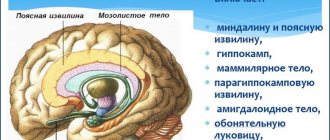Schizoaffective disorder is a mental disorder of an endogenous nature, combining the symptoms of schizophrenia and signs of an affective disorder. This disease is characterized by abnormal processes of mental activity and a decrease in the emotional sphere. Common symptoms of the disease include disorganized speech, confusion in thought processes, paranoid delusions, and auditory hallucinations.
The disease in question is usually diagnosed based on the presence of schizophrenic symptoms and manifestations of a mood disorder (affective deviation). At the same time, schizoaffective disorder does not completely meet the clinical criteria of the given pathologies that form the basis of this illness. However, the symptoms are quite pronounced, despite their blurriness. Today, the described pathology is classified as a borderline group of illnesses between mood disorders and schizophrenia. The prevalence of this deviation is much lower among residents of rural settlements than among residents of megacities.
Features of the disease
The condition of such a patient can hardly be called adequate and healthy. His presence in society is extremely difficult, since a person’s thoughts, actions, and feelings begin to change. His reality is completely modified and defies logical explanation. When accompanied by depression, the patient is able to completely withdraw into himself, withdraw from society, and be afraid of large crowds of people. Feelings of anxiety, panic and hopelessness almost never leave a person suffering from schizoaffective disorder.
Global changes are noticeable to everyone around us. They may appear like this:
- Depressed or depressed state;
- Complete or partial lack of appetite;
- Sudden changes in body weight;
- Alcohol abuse;
- Complete disorder of sleep and rest patterns;
- Weakness and lack of interest in life;
- Blame and self-reproach;
- Distracted attention, loss of control over your thoughts;
- Various manias and groundless experiences;
- Thoughts about suicide or death itself.
A person is also able to see hallucinations, stops monitoring his health and appearance, he develops obsessive ideas, his speech is confused and incomprehensible due to the large flow of thoughts.
Derealization and depersonalization
These symptoms of schizoaffective disorder are among the most common. The fact is that with this disease, the boundaries between one’s own “Ego” and the outside world are erased. In this case, they talk about depersonalization. The patient may feel parts of his body foreign or changed; the world may seem unreal to him. He may perceive strangers as close ones, and family members, on the contrary, as strangers. Depersonalization can manifest itself as a reincarnation of the “Ego,” its merging with the world, or complete disappearance.
Derealization is an altered perception of objects in the surrounding reality. For example, some of their properties may seem more significant than others, even if in reality these properties are of little significance. Reality can be perceived as something like a movie, where everyone plays a role.
Schizoaffective disorder
Typically, people perceive the term “borderline disorder” as a condition where a person is 50% healthy and 50% patient. This is completely untrue. If the criteria for any disorders are not observed in the way of thinking, the state of the emotional sphere, and behavioral factors, then the person simply is not among the sick. Of course, this type can work with a psychotherapist for the rest of his life, “heal the soul,” and look for the causes of contradictions. But this is not the case when it is legitimate to at least somehow mention psychiatry.
So, schizoaffective disorder, which has ICD 10 code F25, includes several subtypes:
- manic type;
- depressive type;
- mixed type;
- other disorders;
- unspecified disorders.
Understanding bipolar disorder or schizoaffective disorder in a patient is quite simple. With the latter, the symptoms of one of the schizophrenia syndromes are clearly expressed. Within a period of 2 weeks, something from this list of criteria should be observed:
- auditory hallucinations in the form of voices;
- delusions of control and influence;
- sensations of telepathy, hearing one’s own thoughts to other people;
- speech disorders and neologisms;
- persistent delirium;
- catatonic symptoms.
At the same time, the patient exhibits signs of bipolar disorder and criteria for schizophrenia simultaneously, and he himself is not a drug addict and has not received a traumatic brain injury. The usual course of bipolar disorder, without signs of schizophrenia, can be complex and contradictory, but hallucinations are not observed in patients. Their speech functions and cognition are sometimes impaired, but this is not accompanied by overt delirium. Perhaps the only syndrome that can be observed in people with bipolar affective disorder and schizophrenics alike is an unexpected interruption of the thinking process. In the depressive phase, stupor may also be observed, but not reaching the signs of catatonic schizophrenia.
Typology of pathology
Schizoaffective disorders can be accompanied by different background moods, depending on the prevalence of which we can talk about three main types of developing pathological process:
- Elevated mood with delusions of grandeur, with delusions about great origins and one’s own superpowers is a manifestation of a manic type disorder.
Endless fun, hyperactivity with a reduced need for sleep, an accelerated pace of speech, thoughts and actions, delusional ideas that take on a cosmic or magical character - all this is schizoaffective disorder (manic type).
- If schizoaffective disorder is of the depressive type, then it manifests itself in low mood with elements of hypochondriacal delirium, poor appetite, weight loss, apathy towards everything around you and towards life, general weakness, and a feeling of hopelessness.
- Schizoaffective disorder can be both depressive and manic. The mixed type is characterized by the fact that with such a pathology, fear and apathy are replaced by happiness and vice versa.
Hallucinations
A hallucination is a sensation that occurs independently of real stimuli. Depending on the analyzer, auditory, visual, tactile, olfactory, and taste hallucinations are distinguished. Sometimes it happens that the patient perceives his own thoughts as coming from outside. In this case, they talk about pseudohallucinations.
The vast majority of hallucinations experienced by patients belong to the auditory modality (about 70% of patients). Only 10% suffer from visual impairment. Tactile hallucinations are also thought to be common, but sufferers do not always report them.
Causes
At the moment, the causes of the occurrence are poorly understood, but there are a number of factors that can influence the manifestation of the disease:
- Genetic factors. It has been proven that there is a certain “risk gene” that, when unfavorable conditions are imposed, can give rise to the development of schizophrenic symptoms. The possibility of genetic mutations in the patient’s parents is also possible.
- Environmental factors. There is some correlation between the presence of schizoaffective disorder and poor quality of life. These may include people who have been discriminated against, living in poverty, migrating, or living alone.
- Addiction to alcohol and drugs. In such cases, differential diagnosis between addiction and schizoaffective deviation is difficult, since patients hide the true symptoms while intoxicated.
- Psychotraumatic situations. The onset of the disease occurs during periods of acute stress or grief.
Cases from medical practice
The following example from a doctor’s practice demonstrates how difficult it can be for a specialist to diagnose a mental disorder of a schizoaffective nature and to separate it from diseases of the same type.
A young and self-sufficient woman, a mother of three children, several months after breaking up with her partner, began to suffer from acute psychosis. Some time after this event, she began to hear voices. It seemed to her that the whole world was against her, everyone wanted her dead and was trying to kill her. At the same time, she clearly felt how a conspiracy was forming around her.
The patient almost stopped sleeping, fearing for her life, and eating, since, in her opinion, all the food was poisoned. During this period, she completely withdrew into herself and practically stopped leaving the room and communicating with her family. Her children took care of all the household chores.
Her family convinced her to see a doctor. After two months of treatment, the woman felt much better and returned to normal. This state lasted for a week and a half, after which she began to experience apathy, depression, and any motivation and interest in life disappeared.
The woman could not read or watch TV due to lack of concentration. Often her condition changed to the radically opposite: the patient laughed for no reason, talked about her importance and necessity in society, and was proud of her everyday actions. After a re-examination by a specialist, he urgently adjusted the therapy.
At this time, the woman feels stable and natural. This example is a clear indication of how difficult it is to initially identify a disease such as schizoaffective disorder. If at first all the symptoms indicated the initial stage of schizophrenia, then its subsequent behavior can be clearly explained by the mixed type of this disease.
Symptoms of the disease
The clinical picture is accompanied by the development of symptoms characteristic of schizophrenia and mood pathology:
- lack of appetite with subsequent weight loss and metabolic disorders;
- excited state, easily develops into aggression and irritation;
- lack of interest in the outside world;
- sleep disorders characterized by insomnia or drowsiness;
- inferiority complex;
- decreased cognitive function, deterioration of memory and concentration;
- aggressive behavior in which the patient seeks to harm himself and others;
- chronic fatigue;
- suicidal tendencies;
- speech disorder: acceleration of tempo, change in tone, stuttering, missing endings or whole words;
- delirium, characterized by monologues with abrupt ideas and statements;
- increased sexual activity, desire for violence and rough sexual acts;
- illogical behavior that develops in response to some action or statement, often accompanied by monotonous muttering;
- auditory hallucinations resulting from overexertion or stressful situations.
general characteristics
Schizoaffective psychosis (recurrent, circular schizophrenia) is a slowly progressive disorder manifested by psychotic attacks and severe affective disorder or schizophrenia.
Psychosis has a long-lasting course and negatively affects all aspects of life. The dynamics of attacks are the simultaneous coexistence or sequential development of periods of depression and mania.
The complex of symptoms includes not only an affective disorder, but also signs of schizophrenia, which manifest themselves in varying degrees of severity and have different durations.
Schizophrenia is a disorder in which thinking changes, the sense of reality is lost, the expression of emotions and attitude towards other people is disrupted. Affective disorders are characterized by frequent mood swings, with the presence of mania and depression of various types.
At-risk groups
Schizoaffective disorder does not have a specific developmental framework, so absolutely no one is immune from it. According to statistics, women are exposed to the disease slightly more often than men. The diagnosis is usually made between the ages of 15 and 30, when the body undergoes a period of maturation and formation. It is almost impossible to identify such a diagnosis in a child.
Schizoaffective disorder is a manifestation of two diseases at once (psychosis and schizophrenia). However, most often doctors cannot correctly identify and recognize the patient’s symptoms, so they attribute only one of these two diseases to him. As a result, improper treatment occurs, and the disease turns into a manic type. It is precisely because of the inability to correctly diagnose that no one today knows exactly how many people are exposed to the disease. There is an opinion that every 200 people have had manifestations of this disorder at least once in their lives, but in many cases the psychosis receded on its own.
Manic type
Manic schizoaffective disorder is characterized by the presence of symptoms of mania and schizophrenia. It is believed that patients in this category recover the fastest. This disorder, in addition to the general symptoms of schizophrenia, is characterized by high spirits and overestimation of one’s achievements. These signs are often combined with increased irritability, anger, and delusions of grandeur.
In all cases, there is increased activity and decreased concentration. The patient may express a variety of fanciful delusional ideas. In order to find out whether a particular symptom is actually experienced by him, the psychiatrist conducts a thorough interview.
Schizoaffective disorder: difference from schizophrenia
Schizoaffective disorder is an endogenous psychosis, without a progressive (progressive) course, in contrast to schizophrenia, which is a chronic progressive mental illness that destroys the personality. ORB is characterized not by continuous, but by periodic manifestations of pathology. In the patient’s life, episodes of psychosis occur (exacerbations, attacks), which can go away on their own without treatment. The rest of the time the patient exists safely, because the schizophrenic defect grows extremely slowly, which practically does not lead to social maladjustment.
Side effects of therapy
As symptoms of schizoaffective disorder, experts identify not only the primary signs that indicate the presence of the disease, but also the so-called negative syndromes that develop as a result of treatment with psychotropic medications. This type includes the following symptoms:
- Retardation of movements, impoverishment of thinking and speech.
- Weakening of mental activity, partial or complete lack of spontaneity.
- Autism – unwillingness to cooperate, manifestations of asociality.
- Decreased ability to make decisions, weakened will.
- Difficulties in maintaining a conversation - there is no contact with the interlocutor.
Diagnosis of schizoaffective disorder
If symptoms appear, the doctor will look at your medical history and perform a complete examination. Although there are no laboratory tests to reliably identify schizoaffective disorder, a doctor may use other tests, such as X-rays or blood tests, to determine whether the symptoms are actually due to the disease. If the doctor's examination does not reveal a physical cause for the development of symptoms, then the patient should consult a psychiatrist or psychologist - specialists in mental illnesses who have been specifically trained in how to determine the diagnosis of these diseases and how to treat them. Psychiatrists and psychologists specifically design interviews and other tests to determine whether a person is sick or not. A diagnosis of schizoaffective disorder is made when a person has periods of continuous illness, or has had mania, depression, psychosis, or all of these disorders, and only has symptoms of schizophrenia. In addition, to be diagnosed with the disease, a person must have had symptoms for at least two weeks.
History of the study of schizoaffective psychosis
Disputes among scientists regarding the causes of the development of this disease and its belonging to a certain category of pathologies have not subsided to this day. The term “schizoaffective psychosis” was introduced in 1933 by Y. Kazanin. But even earlier, K. Kleist identified cycloid psychoses. They, together with non-systemic schizophrenia, later in the history of psychiatry took a place corresponding to schizoaffective psychosis.
In 1957, K. Leonhard began to talk about a third endogenous disease. In addition, there have been attempts to consider schizoaffective psychosis as one of the subforms of a single endogenous psychosis.
In clinical practice, pathologies corresponding to schizoaffective disorder were diagnosed as psychogenic schizophrenia, periodic psychoses, atypical schizophrenia, cycloid psychosis, etc. At the same time, some psychiatrists argued that these conditions were similar to schizophrenia, while others argued that it was affective psychosis. In this regard, modern science is forced to look for ways to more narrowly diagnose schizoaffective disorders in order to distinguish them from schizophrenia.
What could be the prognosis?
Schizoaffective disorder, the prognosis for treatment of which in most cases is favorable, does not cause gross personality changes, although it has a fairly long course.
There is no special treatment for this disorder. Everything is individual. To improve the quality of life, the patient should regularly visit a psychiatrist and take anti-relapse medications.
Treatment
Therapy for schizoaffective disorder involves the use of therapeutic interventions combining medication and psychotherapy. The use of medications is aimed at stopping or reducing the manifestations of schizoaffective psychosis - hallucinatory complex, delirium, clouding of reason. In this case, antipsychotic drugs are prescribed. As part of complex therapy, treatment involves the use of thymoleptics.
The effectiveness of the fight against the disease is increased by psychotherapeutic methods. Their goal is to identify the causes that provoked the condition and their awareness by the patient himself. Treatment of schizoaffective psychosis also involves the use of a number of rehabilitation procedures, which are based on working with relatives of the carrier of the pathology.
Essential medicines
Groups of medications most often prescribed in the treatment of schizoaffective disorder:
- neuroleptics - they are used both to eliminate psychotic symptoms (risperidone, quetiapine, trifluoperazine, amisulpride, haloperidol) and for the purpose of calm, to eliminate manic agitation (chlorpromazine, levomepromazine);
- mood stabilizers - these drugs are intended to reduce the severity of affective disorders in order to maximally stabilize mood at one level that is comfortable for the patient (valproic acid, carbamazepine);
- antidepressants - they are prescribed to eliminate depressive symptoms, to improve mood, eliminate pessimistic thoughts, and stimulate physical activity of patients (paroxetine, fluoxetine, fluvoxamine, sertraline, amitriptyline).
To achieve high-quality remission and maintain it, it is necessary to follow the doctor’s recommendations and continue to take prescribed medications, especially for mood stabilizers.
Disorders of mental activity
Another symptom of schizoaffective disorder is thought disturbances. The most common is the complete absence of thoughts. Subjectively, this is perceived by patients as a “failure” in thoughts. Such a stop is associated not only with disturbances in mental activity, but also with memory pathologies. The patient may forget what he started talking about, his thoughts may become confused and suddenly interrupted. The ability to think abstractly is often impaired. The following symptoms also include thinking disorders:
- Repetition of the same phrases (perseveration).
- Meaningless rhymes.
- Violations of figurative thinking.
- Neologisms.
- Merging of concepts.
Recommendations for the patient’s loved ones
If your wife or husband has been diagnosed with schizoaffective disorder, you should remember the positive dynamics of treatment of the pathology. With proper treatment, the patient does not experience disability, suicidal or manic tendencies. The prognosis for mental disorders is favorable, so the elimination of pathology is carried out on an outpatient basis. At the same time, the patient’s well-being depends 60% on the attitude of the people around him and only 40% on psychotherapy and medication treatment.
To achieve remission, it is important to ensure that your loved one follows all medical recommendations, visits a psychiatrist in a timely manner, and takes medications. It is necessary to create a calm atmosphere in the house and provide comfort to the patient. The patient should not be exposed to stress.
If you suspect that a period of exacerbation is approaching, you should notify your doctor about this so that the main therapy can be adjusted. In this case, it is necessary to ensure complete rest for the patient:
- cancel physical activity;
- avoid stressful situations and emotional stress;
- do not act aggressively.
If an attack of psychosis occurs, you need to gently convince the patient to see a doctor. During the conversation, you should not argue with the patient or be interested in hallucinations and delusions. If there are auditory hallucinations, when the patient begins to hear voices calling for harm to themselves and others, it is necessary to immediately call an ambulance.
Related posts:
- Treatment of schizophrenia with insulin coma - how effective is the method of the past? Schizophrenia is a mental illness that is observed more often than other mental illnesses, usually...
- Benefits of Stress Stress is a normal defense mechanism that the human body needs...
- Constant fear and anxiety in children It is common for every person to experience fear, anxiety, and anxiety. But, unlike...
- Schizophrenia in women Schizophrenia can remain unrecognized for a very long time. Patients, and sometimes...
Experts' forecasts
The main difference between schizophrenia and recurrent schizophrenia is the consequences of recovery from psychosis. In the second case, subject to timely and correct treatment, the patient does not experience a residual schizophrenic defect after an exacerbation. This means that his behavior will lack such manifestations as passivity, apathy, loss of social connections, irreversible emotional flattening (lack of reaction to what is happening).
As a rule, after therapy, the patient may be left with short-term and insignificant phenomena, such as increased fatigue, a feeling of inadequacy, etc. After a short time, they disappear, and the person has the opportunity to return to his previous life.
Despite the favorable prognosis, this does not make this disease easier or less significant. It is strictly contraindicated to refuse treatment or do it yourself. After a course of therapy, the patient must follow the doctor's instructions. At the same time, the patient is prescribed not only drugs that relieve and prevent possible recurrences of schizophrenic symptoms. During this period, the patient also needs to take mood-stabilizing medications.











